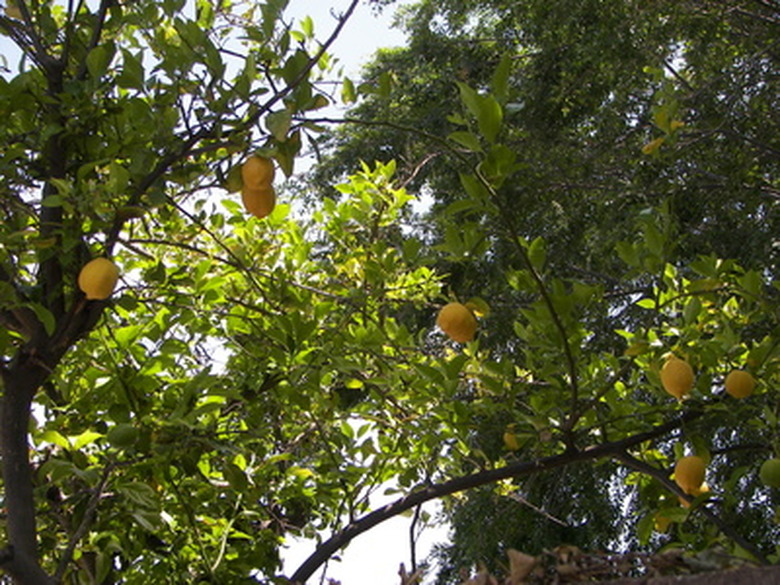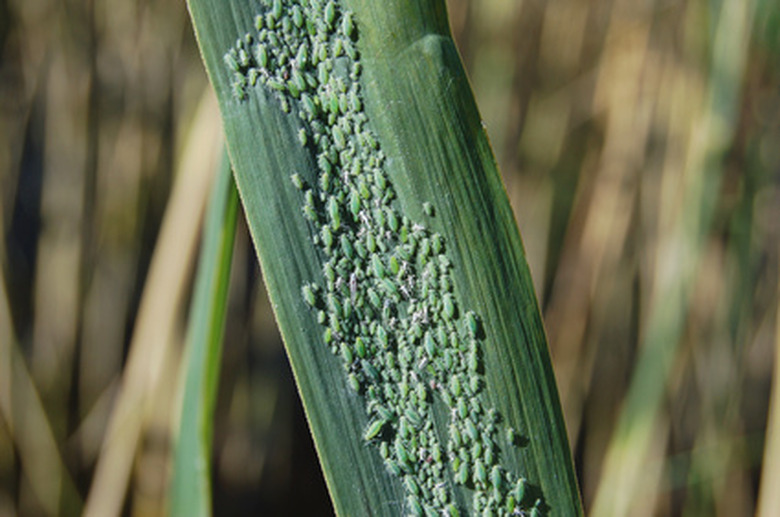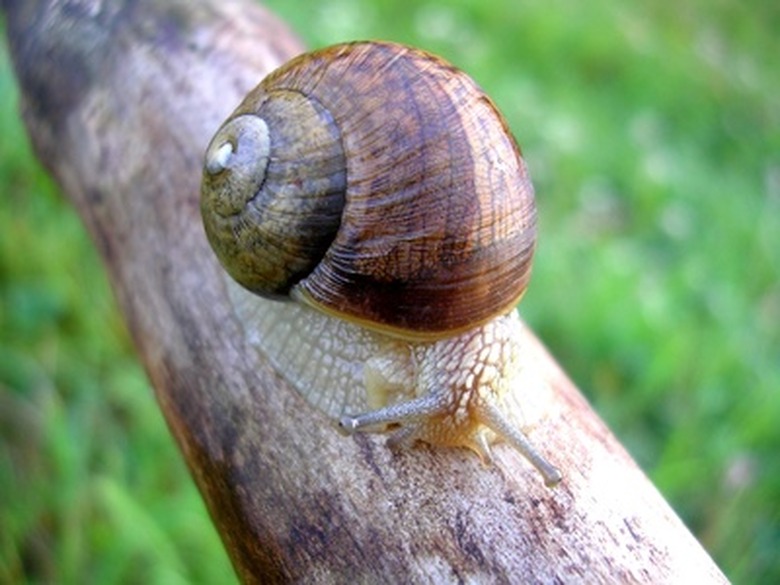How To Identify Lemon Tree Pests
Like most other citrus trees, lemon trees are susceptible to a wide range of pests. Citrus pests can ruin your lemon crop and compromise the lemon tree's overall health and vitality. Identifying the exact insects that are attacking your lemon tree is essential to properly treating the tree with horticultural oils, insecticides and other methods. Because many lemon tree pests are tiny and difficult to see with the naked eye, try using a magnifying glass when you inspect the tree's fruits, leaves and branches.
Step 1
Identify aphid infestations in your lemon trees by looking for cupping or curling and yellowing new-growth leaves. Also look for a sticky, sap-like liquid coating or dripping from the leaves, which is an aphid secretion called honeydew.
Step 2
Look for rust- or brown-colored rinds on the lemons to identify the citrus rust mite. The citrus rust mite can infest your lemon tree as soon as the fruits begin to develop after the tree blooms.
- Like most other citrus trees, lemon trees are susceptible to a wide range of pests.
- Identify aphid infestations in your lemon trees by looking for cupping or curling and yellowing new-growth leaves.
Step 3
Look for small, discolored raised spots on the lemon rinds, tree bark and leaves to identify scale insects. Soft scale insects are miniscule. They live on the wood, foliage and fruit, and appear as tiny waxy or crusty bumps during the spring and summer.
Step 4
Spot mealybug or cottony cushion scale infestations on your lemon tree by looking for cottony substances collecting around the fruit stems through the summer until harvest time.
Step 5
Identify spider mites on your lemon tree from the scratched, silvery discoloration on the leaves during the summer and fall.
Step 6
Study the lemon tree's leaves for translucent "scales" on the undersides and small, whitish, winged insects to identify whiteflies. The whitefly can infest your lemon tree from spring until fall, its larvae feeding on the leaf sap and causing the leaves to curl.
- Look for small, discolored raised spots on the lemon rinds, tree bark and leaves to identify scale insects.
- Spot mealybug or cottony cushion scale infestations on your lemon tree by looking for cottony substances collecting around the fruit stems through the summer until harvest time.
Step 7
Look for tiny black insects and spiral formations of eggs on the undersides of the lemon tree's leaves to identify a blackfly infestation.
Step 8
Identify the orangedog caterpillar by its brown, 1-1/2 inch to 2-inch body. The Orangedog caterpillar will feed on the lemon tree's leaves, chewing the leaves around the outer edges.
Step 9
Spot snail infestations of your lemon trees by looking for holes chewed into the leaves and fruits, as well as sticky snail trails around the lower branches and trunk. Look under the lower branches or beneath fallen leaves around the lemon tree to find the snails.
Step 10
Look for citrus thrips, which are tiny yellow or orange insects that live on the young leaves and fruits. The lemon tree's leaves will distort and curl, turning a silvery-grayish color, along with the streaked and damaged fruits. The leaf buds may also appear shriveled and distorted.
- Look for tiny black insects and spiral formations of eggs on the undersides of the lemon tree's leaves to identify a blackfly infestation.
- Spot snail infestations of your lemon trees by looking for holes chewed into the leaves and fruits, as well as sticky snail trails around the lower branches and trunk.
Step 11
Watch out for citrus bud mites and red mites. Citrus red mites are tiny, barely-visible insects that are purple or red and live on the leaves and fruits, while bud mites infest only the fruits.


